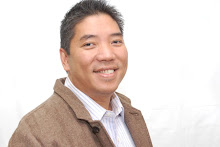By Ambeth Ocampo
Philippine Daily Inquirer
First Posted 01:14:00 11/21/2008
E. Arsenio Manuel was a byline I always associated with the four-volume “Dictionary of Philippine Biography.” As a college student, I would go through Manuel’s work and marvel at the meticulous research that went into these books. Manuel did not only dig up libraries and archives, he actually went around cemeteries copying dates of birth and death from tombstones!
Nicanor Tiongson was kind enough to introduce me to Manuel because he was the only source for these books that were, at the time, unavailable in bookstores. Manuel and I liked each other immediately, so I would visit him from time to time to listen and be inspired by his stories on research. While telling me about the prewar University of the Philippines campus on Padre Faura Street in Manila, he said he had originally planned to be a historian, but since his friend and contemporary Teodoro A. Agoncillo was already plowing that field, he decided to shift to anthropology and started by becoming one of the assistants of H. Otley Beyer.
A retired emeritus professor of anthropology at the University of the Philippines, Manuel invited me to attend his graduate class on Philippine Prehistory in the late 1980s. For a while it seemed as if I was the only one left awake in class after three hours of monotone monologue lecturing. He came to class on the first day and wrote on the board, “Where history ends anthropology begins.” I took that as a cue to abandon history and go further down the timeline, but there was no archeological studies program anywhere in the Philippines at the time. I flirted a while with anthropology and realized early on that I was not meant to be an archeologist digging in an open field; I was more comfortable researching in a library or archive.
I funded an excavation in Barrio Laguile in Batangas province in 1990 and that became my hands-on training in archeology. I saw and learned how test pits are made, how stratification of the soil gives clues to age and chronology. I also saw how archeologists evaluate the materials coming out of the earth: bones, rocks, fossils, broken pieces of earthenware. This was all very interesting but there was just so much to learn especially in the natural sciences: botany, biology, anatomy, chemistry, etc. This made me remember that I chose to become a historian to avoid math and science in school.
During our Batangas excavation, there were only two highlights, because we didn’t find anything spectacular or even moderately important. First was when a carabao fell into the pit one night and we spent the better part of a day getting it out, to the amusement of the whole town and neighbors. Second was when a handful of farmers came to the site with sacks and “bayong” [large native woven bags] filled with an assortment of ancient Oriental ceramics they had found while tilling their fields. Some of them found this illegal trade so lucrative that they left their farms and made a living looking for and selling ceramics to dealers and collectors in Manila. They brought out Ming porcelain, usually blue and white bowls and dishes, and placed them on the ground. Some had other wares, not necessarily from the area, artifacts traded by our forefathers that came from China, Vietnam, Thailand and India. I had seen similar artifacts in museums. These objects were unfortunately taken out of the ground without proper archeological care so many of the pieces were broken. Worse, the context of the objects—where were they found, with what other objects or with human remains—all that was gone.
From then on I never looked at my mother’s display cabinets the same way. Before all this, I never took a second look at the ceramics we had at home, which mother used as flower vases or just scattered tastefully on coffee tables. But these things have been coming out of the ground and collected since the 1960s. So many clues to our prehistory are actually lying around in people’s living rooms. They are not used for study or research but just for decoration.
In the San Pedro beach resort in Romblon province, I saw a whole plate of broken shards of Ming period Chinese and Thai ceramics and was told that after a heavy rain these are readily found on the shore. A reader sent me an e-mail saying that when they played “piko” [hopscotch] as children, they threw around Ming shards too as markers.
When roads are built and fields are cleared, these things still turn up. It is too bad that young people do not take this up in school. Children are taught about pre-colonial trade and exchange in “Hekasi” [Geography, History and Civics combined] but few realize that they can see and handle the real thing in their own homes.
Although I’m a failed anthropologist, I look back with fondness to E. Arsenio Manuel’s class and the afternoons in his study because he made me see and notice things around me that I would have otherwise overlooked. He taught me to be sensitive to artifacts and the stories they contain or evoke.
Not all history is found in a written record or a book; sometimes we find stories in photographs and artifacts. Learning to see things in a different light and continually asking questions, even of things we think we know already, have made me a better researcher. Agoncillo and Manuel infected me with their enthusiasm, and I can only hope that I can pay this debt forward by rubbing off my enthusiasm on my students and readers.
* * *
Comments are welcome at aocampo@ateneo.edu.
Thursday, November 27, 2008
Subscribe to:
Post Comments (Atom)

No comments:
Post a Comment